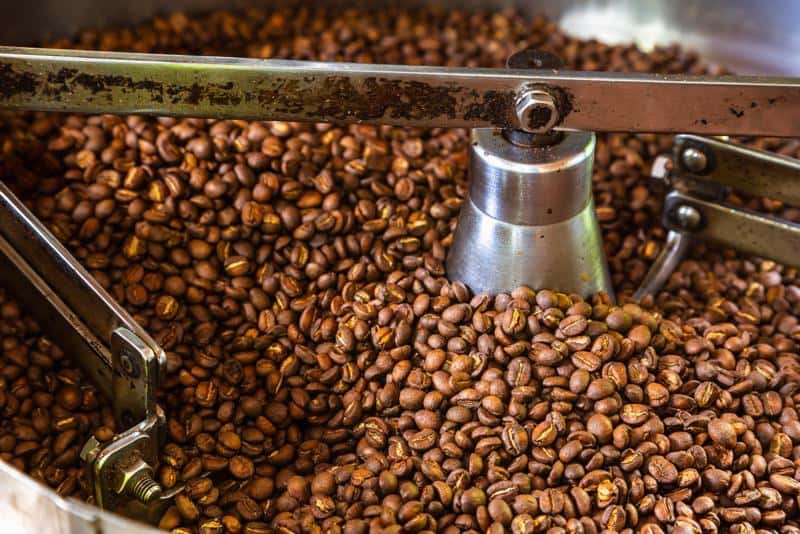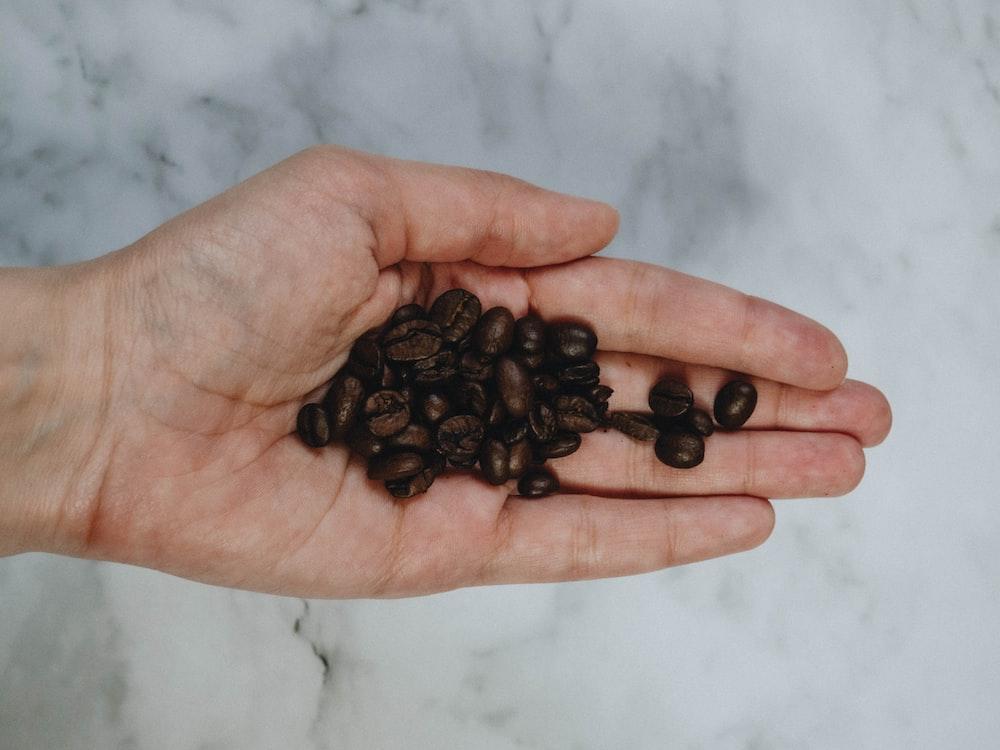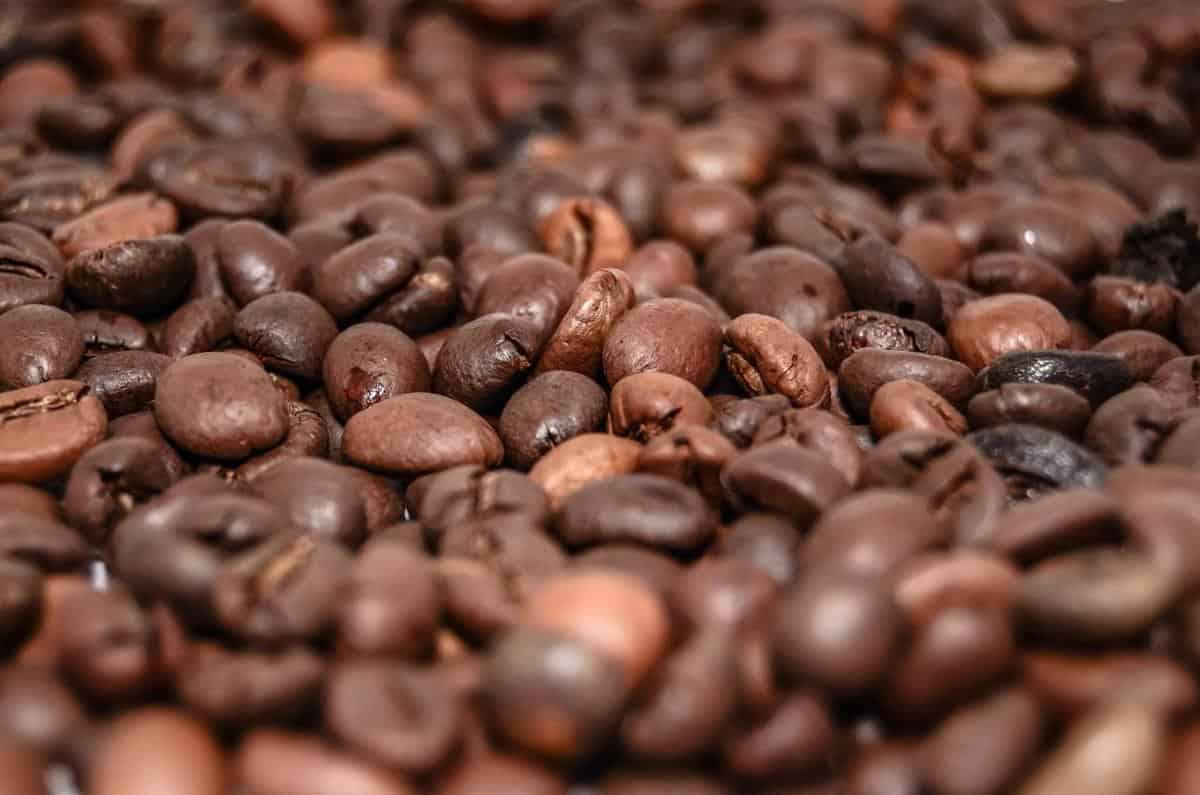Cambodian coffee, with its rich and intense flavors, has emerged as a vibrant player in the global coffee scene. Its unique characteristics and sensory experience have captivated coffee enthusiasts around the world.
In this blog post, we will take you on a journey to explore the intriguing world of Cambodian coffee, from its historical roots to its diverse varieties and brewing techniques. Get ready to awaken your senses as we delve into the deliciously bold flavors that make Cambodian coffee truly exceptional.
First cultivated in Cambodia over a century ago, the country’s coffee industry has experienced a recent resurgence, garnering attention for its high-quality beans and innovative approaches to production. We will trace the rise of Cambodian coffee, uncovering how it has evolved from its humble beginnings to become a thriving industry today.
Beyond just being a caffeine fix, Cambodian coffee offers a remarkable range of flavors that can satisfy even the most discerning palates. We will dive deep into the unique varieties of Cambodian coffee beans, exploring their distinct flavor profiles and delicate aroma notes. From robust earthy tones to nuanced fruity undertones, these coffees promise an exquisite sensory adventure.
Join us as we unravel the art of roasting Cambodian coffee-the journey from raw bean to flavorful cup. Learn about both traditional and modern roasting techniques employed in Cambodia and how they enhance the natural characteristics of the beans. Discover how this careful process brings out the enticing aromas and intensifies the complex flavors found within each cup.
Embark on this tantalizing odyssey into Cambodian Coffee culture with us as we explore traditional brewing methods like using a phin filter or sock brewer-a feast for not only your taste buds but also your eyes. And for those craving something new and unique, we will share specialty recipes that showcase the versatility of Cambodian coffee flavors-think refreshing iced drinks or indulgent dessert-inspired concoctions.
So prepare yourself for an unforgettable experience-a symphony of flavors, a celebration of craftsmanship, and a commitment to sustainability. As we journey through the captivating world of Cambodian coffee, we invite you to indulge in its deliciously bold offerings and embrace the awakening power that lies within each cup. Let’s awaken our senses together and discover the hidden gems of this exceptional brew.
The Rise of Cambodian Coffee
Cambodia has a rich history of coffee cultivation, dating back to the early 1900s when French colonists introduced coffee plants to the country. However, political unrest and economic struggles led to a decline in the coffee industry for many years. In recent decades, there has been a remarkable resurgence of Cambodian coffee, driven by both local farmers’ dedication and international interest in unique and exotic flavors.
Historically, Cambodia was known as an exporter of robusta coffee beans, which are typically lower in quality compared to arabica beans. However, in the past decade or so, there has been a shift towards producing specialty-grade arabica beans. These beans are known for their complex flavor profiles and are highly sought after by coffee enthusiasts around the world.
The revival of the coffee industry can be attributed to several factors. Firstly, NGOs and organizations have been working closely with local farmers to improve farming practices and provide training in sustainable agriculture techniques. This support has helped increase productivity and ensure high-quality crops.
Secondly, there has been a growing appreciation for Cambodian coffee in international markets due to its distinct flavor characteristics. The combination of these factors has contributed to the rise of Cambodian coffee on both domestic and global platforms.
Today, Cambodia is renowned for its unique varieties of arabica beans that showcase a wide range of flavors. From floral and fruity notes to chocolatey undertones, Cambodian coffees offer an exciting sensory experience unlike any other. The diverse landscape and favorable climate contribute to the complexity and richness found in each cup.
| Bean Varieties | Flavor Profiles |
|---|---|
| Kampot Pepper Coffee | Aromatic with notes of black pepper and spices |
| Mondulkiri Honey Process | Sweet and floral, with hints of honey and tropical fruits |
| Ratanakiri Wild Civet Coffee | Rich and earthy, with a smooth chocolate finish |
The Perfect Bean
Cambodia is home to a variety of coffee bean varieties that offer a unique and distinct flavor profile. The country’s geographical diversity, coupled with its rich soil and climate conditions, contribute to the cultivation of different coffee varieties that delight the senses. In this section, we will explore some of the most notable varieties of Cambodian coffee and delve into their distinct flavors and aroma notes.
- Arabica: Known for its delicate and nuanced flavors, Arabica coffee beans are grown at higher altitudes in Cambodia. These beans produce a milder acidity with notes of fruitiness, floral undertones, and occasionally hints of chocolate. The complex flavors and vibrant aromas make Arabica coffee a favorite among discerning coffee connoisseurs.
- Robusta: Robusta coffee beans thrive in lower altitude regions in Cambodia, where they develop a bolder taste profile. Robusta beans are known for their full-bodied nature and higher caffeine content compared to Arabica beans. They offer earthy flavors with notes of dark chocolate, toasted nuts, and sometimes even tobacco or spices.
- Excelsa: An often overlooked variety, Excelsa coffee beans bring a unique twist to the Cambodian coffee scene. With its rare mix of tartness and sweetness, Excelsa beans feature fruity aroma notes reminiscent of ripe berries or stone fruits. Their medium body makes them ideal for blends or as standalone options for those seeking an adventurous cup of Joe.
- Catimor: A hybrid variety derived from crossing Caturra and Timor coffees, Catimor thrives in Cambodia’s tropical climate conditions. These beans boast balanced flavors with low acidity levels accompanied by sweet citrusy notes layered over subtle hints of caramel or cocoa.
By exploring these diverse bean varieties found within Cambodia’s borders, one can embark on an exciting journey through the rich tapestry of flavors offered by Cambodian coffee.
Whether you prefer the delicate complexity of Arabica, the bold intensity of Robusta, the fruity adventure of Excelsa, or the balanced blend of Catimor, Cambodian coffee has something to cater to every palate. Let your taste buds be awakened by the perfect bean that suits your preference and embrace the deliciously bold flavors that Cambodian coffee has to offer.
Uncovering the Art of Coffee Roasting in Cambodia
Roasting coffee is a vital step in the coffee production process that greatly influences the flavor and characteristics of Cambodian coffee beans. In Cambodia, both traditional and modern techniques are used to achieve the perfect roast. The art of coffee roasting in Cambodia reflects the country’s rich cultural heritage and commitment to producing high-quality coffee.
In traditional coffee roasting methods, fresh coffee beans are roasted using open flame stoves or wood-fired ovens. This ancient technique imparts a distinct smoky flavor to the beans, resulting in a unique taste profile that sets Cambodian coffee apart. The slow roasting process allows for the development of complex flavors while preserving the natural attributes of the beans.
On the other hand, modern techniques such as drum roasting and hot air roasting have gained popularity in Cambodia. These methods offer precise control over temperature and airflow, ensuring consistency in each roast batch. Modern roasters also focus on showcasing the inherent flavors of different bean varieties by carefully adjusting factors like time and temperature during the roasting process.
Regardless of the technique used, skilled Cambodian coffee roasters rely on their expertise and sensory perception to determine when each batch of beans has reached its optimal roast level. This balance between artistry and science allows them to bring out the best flavors and aromas from Cambodian coffee, creating a truly exceptional sensory experience for consumers.
Cambodian Coffee Roasting Techniques
| Roasting Technique | Description |
|---|---|
| Traditional Open Flame Roasting | Fresh coffee beans roasted over open flame stoves or wood-fired ovens, imparting a distinct smoky flavor. |
| Drum Roasting | Coffee beans tumbled inside a rotating drum with controlled heat, providing even roasting and highlighting the unique characteristics of the beans. |
| Hot Air Roasting | Airflow forces hot air through coffee beans, evenly roasting them while minimizing bitterness or burnt flavors. |
Brewing Secrets
Cambodia is not only known for its rich coffee bean varieties and exquisite flavors, but also for its unique and traditional brewing methods. In this section, we will explore the brewing secrets of Cambodian coffee, from the traditional methods passed down through generations to innovative specialty recipes that showcase the versatility of Cambodian coffee flavors.
One of the traditional brewing methods in Cambodia is using a phin filter. The phin filter consists of a small metal cup with tiny holes at the bottom and a lid. Ground coffee is placed in the cup, and hot water is poured over it. The water slowly drips through the holes, extracting the flavor from the beans. This method creates a strong and bold brew with a rich aroma that awakens your senses.
Another popular brewing method in Cambodia is known as sock brewing or “Cà phê tám piền” in Khmer. This method involves placing ground coffee in a cloth filter bag resembling a sock, which is then hung over a glass or cup. Hot water is poured into the sock and allowed to steep, creating a flavorful brew that often has a smoother taste compared to other brewing methods.
For those looking to explore specialty Cambodian coffee recipes, there are various options to try. One popular recipe is “Sraa Tramok,” which combines freshly brewed Cambodian coffee with condensed milk and ice. This sweet and refreshing drink offers a delightful balance between bitterness and creaminess.
Another specialty recipe is “Kafe Tua Gai,” which translates to “Chicken Poop Coffee.” This unique concoction includes bird droppings collected from chickens fed with high-quality coffee cherries. Despite its unusual name, Kafe Tua Gai has gained popularity among adventurous coffee enthusiasts who enjoy its distinct flavor profile that includes earthy notes mixed with hints of sweetness.
Whether you prefer traditional brewing methods like the phin filter or sock brewer, or want to venture into unique specialty recipes, Cambodian coffee offers a variety of options to satisfy your taste buds. These brewing secrets allow you to experience the full range of flavors and aromas that Cambodian coffee has to offer, making every cup a truly indulgent experience.
An Exquisite Sensory Experience
Cambodian coffee offers a truly exquisite sensory experience that tantalizes the taste buds and awakens the senses. From the moment you take your first sip, you are greeted with a burst of rich flavors and complex aroma notes that make Cambodian coffee truly unique. In this section, we will dive into the tasting notes and flavor profiles that make Cambodian coffee a sensory delight.
When it comes to taste, Cambodian coffee showcases a wide range of flavors that cater to various preferences. One prominent flavor profile is characterized by its smooth and chocolatey notes, resembling the richness of dark cocoa. This flavor profile is often attributed to Arabica beans grown in the Mondulkiri province.
Another popular flavor profile found in Cambodian coffee is fruitiness, with hints of berries or citrus dancing on the palate. These flavors are commonly associated with beans cultivated in Ratanakiri or Siem Reap.
In addition to taste, aroma plays a crucial role in the sensory experience of Cambodian coffee. The aroma profile can vary depending on factors such as bean variety and roasting techniques. Some varieties exude a nutty scent that adds depth to the overall aroma, while others offer floral or herbal undertones that create a more nuanced olfactory experience.
The body of Cambodian coffee ranges from medium to full-bodied, providing a satisfying mouthfeel that lingers with every sip. The acidity levels also contribute to the overall flavor profile, with some varieties offering bright, lively acidity that adds vibrancy to each cup.
Overall, indulging in Cambodian coffee is not just about drinking a beverage; it is an immersive experience for all your senses. From its remarkable taste and enticing aromas to its pleasing textures and complexity of flavors, Cambodian coffee has everything you need for an exceptional sensory journey.
- Rich flavor profiles ranging from smooth and chocolatey to fruity
- Aromas such as nutty, floral, or herbal notes
- Medium to full-bodied with varying levels of acidity
- Complex and nuanced flavor profiles that cater to diverse preferences
Sustainability and Social Impact
Cambodian coffee not only awakens your senses with its rich and intense flavors, but it also has a significant impact on the sustainability and social development of the country. In this section, we will explore the efforts made by local coffee farmers and organizations to promote sustainable coffee production in Cambodia, as well as the positive social impact of the coffee industry on Cambodian communities.
Promoting Sustainable Coffee Production
Coffee farming in Cambodia has seen a revival in recent years, with an increasing focus on sustainability. Many local coffee farmers have transitioned from conventional farming methods to more sustainable practices, such as organic farming and shade-grown cultivation. These practices help preserve biodiversity, ensure soil health, and reduce water usage.
In addition to adopting sustainable farming practices, there are organizations working closely with coffee farmers and cooperatives to provide training and support. They educate farmers about eco-friendly practices that minimize environmental impact while maximizing yield and quality. By implementing these methods, Cambodian coffee farmers are able to produce high-quality beans while preserving the natural resources that their livelihoods depend on.
Social Impact on Cambodian Communities
The growth of the coffee industry in Cambodia has had a positive social impact on local communities. Coffee cultivation provides employment opportunities for many rural families who would otherwise struggle to make a living. This income source allows them to improve their standard of living by investing in education, healthcare, and infrastructure.
Furthermore, some organizations actively work towards empowering marginalized groups within society through coffee production. For example, initiatives have been launched specifically targeting women in coffee farming communities. These programs provide training and resources for women to establish their own small-scale coffee businesses or become leaders within existing cooperatives.
Overall, Cambodian coffee is not just known for its delicious flavors; it is also making a difference in sustainable agriculture practices and contributing positively to the lives of many Cambodian communities.
Where to Indulge in Cambodian Coffee
Cambodia is not only known for its deliciously bold coffee, but also for the unique coffee culture that has emerged in recent years. Whether you’re a coffee enthusiast seeking an immersive experience or a casual drinker looking to try something new, there are numerous cafes and plantations in Cambodia where you can indulge in the flavors of Cambodian coffee.
Cafes
If you’re looking to experience the vibrant cafe scene in Cambodia, there are several must-visit spots that showcase the best of Cambodian coffee. One such cafe is Rumblefish Café in Phnom Penh, which offers a cozy ambiance and a wide variety of specialty coffee drinks. Another popular choice is Feel Good Café & Roastery in Siem Reap, where you can enjoy their signature brews while taking in the relaxed Bohemian atmosphere.
Plantations
For an immersive experience into the world of Cambodian coffee production, visiting a plantation is a must. Mondulkiri Coffee Plantation, located in Mondulkiri province, provides visitors with guided tours that take them through the entire coffee production process – from seed to cup. You’ll have the opportunity to learn about sustainable farming practices and witness firsthand how coffee beans are grown, harvested, and processed.
Unique Experiences
There are also unique experiences available for those seeking something out of the ordinary. For example, Kinyei Café & Soksabike Tours in Battambang offers bicycle tours that allow you to explore local communities while stopping at various cafes along the way to sample different Cambodian coffees. This not only gives you a taste of the local flavors but also provides insight into rural life and supports eco-friendly tourism.
No matter where you choose to indulge in Cambodian coffee, one thing is certain – each location offers its own distinct experiences and ambiance that will make your coffee journey truly memorable. So, be sure to add these cafes and plantations to your itinerary and immerse yourself in the awakening power of Cambodian coffee.
Conclusion
In conclusion, Cambodian coffee offers a unique and exquisite sensory experience that awakens the senses and tantalizes the taste buds. From its rich and intense flavors to its diverse bean varieties, there is something truly special about the coffee produced in Cambodia. The country’s coffee industry has experienced a remarkable resurgence, showcasing the dedication and expertise of local farmers and organizations.
Throughout this blog post, we have explored the history and rise of Cambodian coffee, delving into the art of roasting and uncovering traditional brewing methods. We have also highlighted the sustainability efforts made by local communities, as well as provided recommendations for must-visit cafes and plantations.
Whether you are a coffee connoisseur or someone looking to expand your palate, Cambodian coffee offers a world of flavors waiting to be discovered. Its nuanced flavor profiles, ranging from chocolatey undertones to fruity notes, provide a delightful journey for any caffeine enthusiast.
So why not embrace the awakening power of Cambodian coffee? Step out of your comfort zone and explore the unique flavors it has to offer. Visit one of the recommended cafes or plantations mentioned in this post for an immersive experience in Cambodian coffee culture. Support local farming communities by enjoying their sustainable and delicious offerings.
Deliciously bold and full-bodied, Cambodian coffee promises not only an indulgent cup but also a deeper connection to its rich history and positive impact on local communities. So go ahead – savor each sip and let your senses be carried away by the captivating world of Cambodian coffee.
Frequently Asked Questions
What is Cambodian coffee?
Cambodian coffee refers to the coffee beans that are grown and produced in Cambodia. The country has a flourishing coffee industry, with various regions cultivating different types of coffee beans. Cambodian coffee is typically known for its unique characteristics and flavors.
What does Cambodian coffee taste like?
Cambodian coffee has a distinct taste profile that sets it apart from other types of coffee. It often possesses a rich and full-bodied flavor with hints of fruity or floral notes, depending on the specific region. The taste can vary depending on the processing methods used, but overall, Cambodian coffee offers a delightful balance of flavors.
How do Cambodians drink coffee?
Drinking coffee in Cambodia is a common part of daily life for many Cambodians. The most popular way to enjoy Cambodian coffee is by brewing it using a drip method, which involves pouring hot water over the ground coffee in a filter or cloth bag.
Once brewed, it is commonly served with sweetened condensed milk to add richness and sweetness to the drink.
Does Cambodia grow coffee?
Yes, Cambodia is indeed a producer of coffee. Over the past few decades, there has been significant growth in the country’s coffee industry, with many regions being suitable for growing high-quality coffee beans.
Coffee plantations can be found across different provinces of Cambodia, including Mondulkiri and Ratanakiri, where favorable climate and fertile soil create ideal conditions for cultivating excellent Arabica and Robusta beans.
Why is Vietnamese coffee so different?
Vietnamese coffee stands out due to its distinctive brewing method and flavor preferences. Unlike many other countries where drip methods are popular, Vietnamese coffee is often brewed using a special filter called a phin. This slow-drip process creates an intense and concentrated brew that is typically served over ice or mixed with sweetened condensed milk to balance the strong flavors of the robusta beans commonly used in Vietnam’s traditional coffees.
Additionally, Vietnamese coffees often have earthy undertones due to being roasted with butter or oil instead of air roasted like some other varieties of coffee. These unique brewing techniques and flavor profiles contribute to the distinctiveness of Vietnamese coffee.










